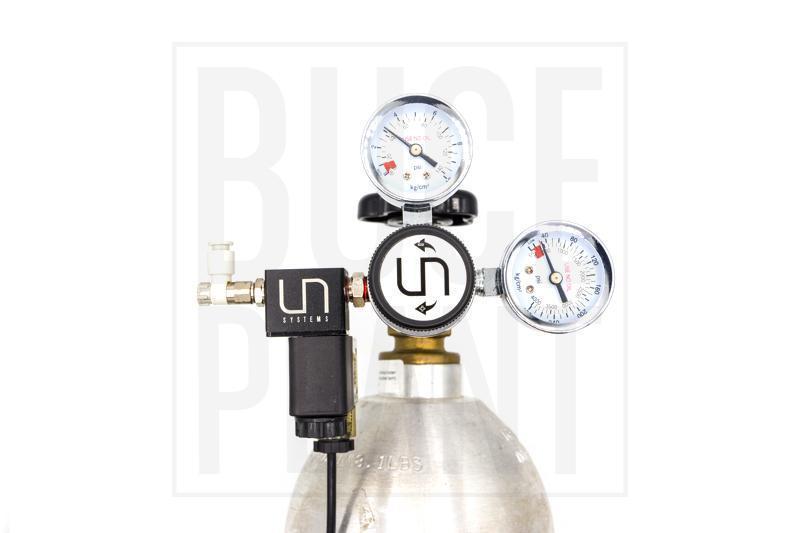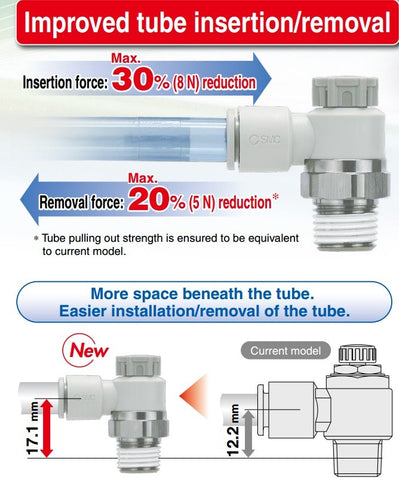
Guide to CO2 Equipment Needed for Planted Tank
CO2 and You! – Intro Pressurized CO2
We all learn that terrestrial plants absorb carbon dioxide and release oxygen into the atmosphere. This is no different for aquatic plants. However, in an environment that is surrounded by water, carbon dioxide is harder to come by.
Carbon is needed by plants to create food. Photosynthesis is the process in which plants absorb carbon dioxide and solar energy to create glucose and oxygen. So naturally, the more carbon that a plant has access to, the faster the growth rate in conjunction with access to solar energy (light).
The most common way to increase the amount of CO2 in an aquarium is via injection in its gaseous form. In the aquarium hobby, there are a few ways of doing this, but in this short article, we will talk about pressurized CO2 and its advantages over other forms of injection.
Pressurized CO2
You’ve probably seen hobbyists showcasing large metal bottles fixed to a regulator of some sort. In order to utilize pressurized CO2 in the aquarium, you need a few main components.
Regulator + Solenoid
A regulator is what controls the amount of carbon dioxide from leaving your CO2 cylinder. Whether you’re using a Sodastream bottle or a 20lb CO2 tank, you must “regulate” the amount of carbon dioxide leaving the container in order to properly disperse it in your aquarium. A solenoid is what will turn your regulator on and off. This is an integral part of an effective regulator because leaving CO2 on in your aquarium will lead to PH fluctuations. The solenoid gives you the ability to plug it into a timer to avoid PH fluctuations that may harm other organisms in your aquarium.
Pro tip: Set the schedule of your regulator to turn on and off with your lights. Although every tank is different, try turning on the CO2 30 minutes prior to the light turning on and turning it off 30 minutes before the lights go off.

CO2 Cylinder
A consumer has many options when it comes to a CO2 cylinder. There are options such as Sodastream bottles, paintball bottles (bottles meant for paintball guns), and larger metal cylinders. Note that the standard fitting size for North American tanks is CGA320. Other adapters will be needed to connect a regulator to a paintball or SodaStream cylinder. It is important to know what fits your regulator has in order to choose the correct CO2 cylinder and vice versa.
Pro tip: The larger the CO2 cylinder you get, the less likely you’ll have to change! Get a 20LB if you can.

Needle Valve
The needle valve is an integral part of the regulator. High-quality needle valves have the ability to further drop the pressure to a fine flow rate and hold it. This valve allows the user to finely tune the amount of bubble enters the aquarium.
Pro Tip: Good needle valves don’t “float”. This means that if you set the CO2 rate to a particular setting, it does not increase/decrease later on without adjusting it.

Bubble Counter
A bubble counter allows the user to easily determine the rate of CO2 entering the aquarium. Hobbyists often use the term “bubbles per second” as a frame of reference.

Diffuser
There are many different diffusers out there. There are inline diffusers, glass diffusers with ceramic plates, and many many more. The purpose of a diffuser is to efficiently dissolve CO2 into the water column. Generally, the finer the bubbles, the more likely it is to be effectively dissolved into the water. If you see that a lot of bubbles are rising to the surface, it is likely that CO2 is not being efficiently dissolved which means you will have to turn up the bubbles per second.
Pro Tip: A high-quality diffuser can save you CO2.

Check Valve
Check valves are an integral part of a pressurized CO2 setup. Check valves prevent water from entering the regulator. Any water that enters a needle valve or regulator WILL damage it!
Drop Checker
A drop checker is a good way to measure how much CO2 is in your aquarium and whether or not you need to increase or decrease the flow rate. A drop checker changes color to determine the optimum level of CO2 needed in your aquarium.

Tell us - Was this article helpful? Please leave a comment below!
If you have any questions regarding this article, please DM us on Instagram, Facebook, or email support@buceplant.com so we can assist you - @buceplant





Comments
Leave a comment